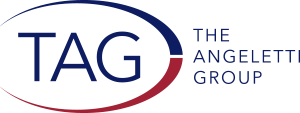Sustaining Faith-Based Organizations: The Need and the Opportunity
Recently, while reviewing the trends in philanthropy and giving among the various not-for-profit sectors, the broad faith-based category (categorized as “Religion” by Giving USA) caught our eye, and revealed several thoughtful takeaways:
- The “religion” subsector is still the largest – gifts to these organizations reached $127 billion in 2017, more than twice any other subsector (Giving USA). In fact, eight of the twenty largest charities in the US from the annual Forbes 100 list are faith-based or have roots as faith-based organizations. The sheer scale of this sector matters.
- The areas of service are remarkably diverse – from food pantries, pre-school programs, post-incarceration services, fighting sex trafficking, low or no cost health clinics, housing – as well as thousands of schools, colleges and hospitals.
- However, the percent increase from the previous year (2.9%) was the smallest of the sectors (Giving USA).
- Statistically, the decline of household giving to the religion subsector has decreased from 46.5% to 34%, a decline that is substantially greater than secular or overall giving.
- One author has gone so far as to title a book on the subject The Great Evangelical Recession, citing statistical declines in attendance and financial participation, as cited by multiple researchers.
- Similar challenges are faced by Roman Catholic and Jewish groups. A Gallup poll found that only 39 percent of American Catholics say they attend church in any given week. Gallup’s survey also analyzed the attendance rates of Protestants, with findings suggesting that the number of Protestants who said they attended church within the past seven days has remained relatively stable since 1955. Giving, however, is a challenge for many groups.
What Does This Mean for Fundraisers?
Against this cultural backdrop, it is worth considering what role fundraisers could or should play in each of our spheres of influence.
- Recognize you are making a difference, even when it is challenging. As the 2019 year is still relatively new, have an internal conversation with not only the fundraising team but also staff members delivering services. What are some of the great stories, beyond what we have told donors? What are some of the “untold stories” of impact, of lives saved, changed, or improved through your work? If you have not yet done an Annual Report, consider making these stories a centerpiece of what you share with your diverse publics.
- Create a summary and dedicate time to sharing stories with your board. Of all stakeholders, assuring them that their “work, wisdom, and wealth” makes a difference will be most appreciated.
- Recommit to the foundational truth that “fundraising is a process, not an event.” Consider those relationships which are pivotal, and be certain there is a plan throughout the year to provide sincere, honest and heartwarming account of your organization and its progress. (sounds better than “cultivation” doesn’t it?) Remember: “90% of fundraising is what proceeds the Ask!” Increasingly, now more than ever, it is about relationships.
- Together, make an honest “confront the brutal facts assessment of what has worked, what hasn’t, what you should keep doing, and what you should cease to do” (one of the hardest).
- For any areas where you have identified challenges in your fundraising, mission implementation, or board development, consider engaging outside counsel to assess a possible approach and assistance. The best firms will honestly tell you whether they can provide cost-effective assistance.
- When discouraged… re-read #1!


